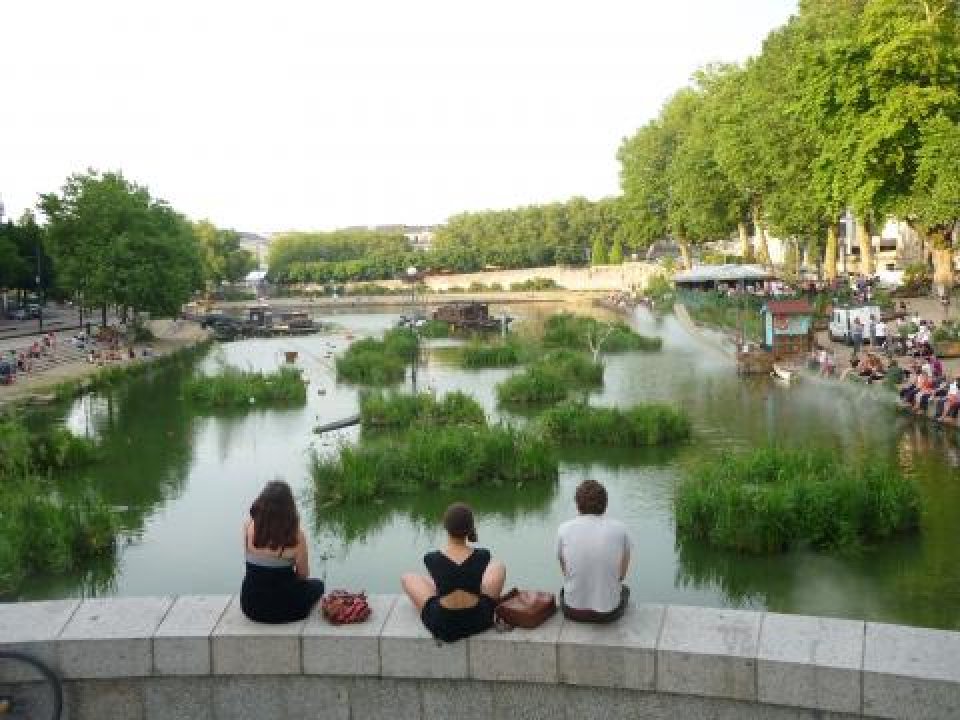
Scale of the project: neighbourhood
Urban density in which the NBS is implemented: high (dense city center, etc.)
- Implementation of vegetated rafts as habitats for local species on a city center river
- Using Bio-sourced materials
It aims to implement artificial shelters for fauna (nesting box, insect hotels, artificial spawning areas…) and vegetation supports were installed. Wooden terraces were also installed to allow citizens to enjoy and observe biodiversity. This project is both thought for biodiversity and for citizens and finaly allow cohabitation between them.
- Reducing temperature at meso or micro scale
- Reduction of energy in the production of new buildings and building materials
- Restoring ecosystems and their functions
- Greater ecological connectivity across urban regenerated sites
- Improve connectivity and functionality of green and blue infrastructures
- Increase achievements of biodiversity targets
- Increase Biodiversity
- Improve water quality
- Increase population & infrastructures protected by NBS
- Increase well-being
Process enablers:
... → ... → ...
...
Process inhibitors:
... → ... → ...
...
Expected time for the NBS to become fully effective after its implementation: short (immediately to few months)
Feedback: still well adapted
Expected life time of the intervention: around 10 years
Dates (for project delivered): 2013
Global (estimated) cost of the project: 50k€ - 200k€
Financing mechanism: cluster1 public financing
BUSINESS MODEL:
Business cluster: Social
Business model: Adopt a stewardship role
Business cluster: Organizational
Business model: Develop scale-up solutions
The aim of this project is to contribute to sustaining and developing the well-being of
all the network (biodiversity and citizens) using collaborative approach.
- Object shapes
- Water
- Natural seminatural water bodies hydrographic network
- Revegetation aquatic planting
- Strategies actions
- Urban planning strategies
- Ensure continuity with ecological network
Alice Duquesnoy (alice.duquesnoy-mitjavila@plante-et-cite.fr)
Olivier Damas
Plante & Cité, Maison du Végétal (https://www.plante-et-cite.fr/)
26 Rue Jean Dixmeras, 49000 Angers
Further information
Nature4Cities (https://www.nature4cities.eu/) aims to develop a knowledge diffusion around Nature-Based Solution (NBS) and a decision support platform through new collaborative models.
This project is part of the Nature4Cities's pioneer case studies database, it will feed the observatory, NBS pre-selection and replication tools, gathered into the Geocluster4NBS.
This project was chosen as a pioneer case study for the following reasons: the project is both thought for biodiversity and for citizens and finaly allow to
cohabitation between them.
Nature4Cities project has received funding from the European Union’s Horizon 2020 research and innovation program under grant agreement No 730468.
